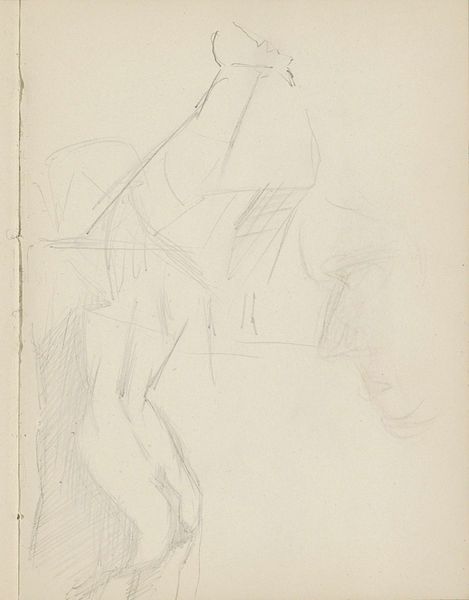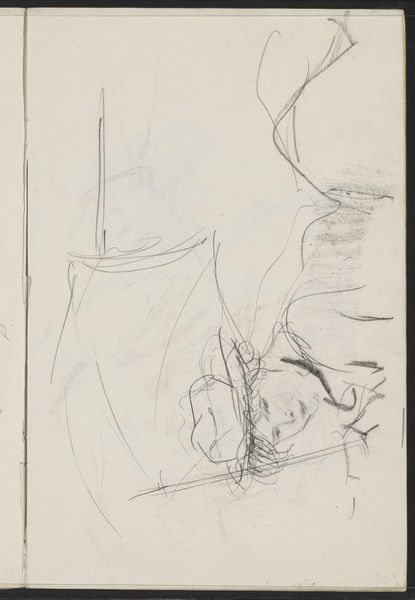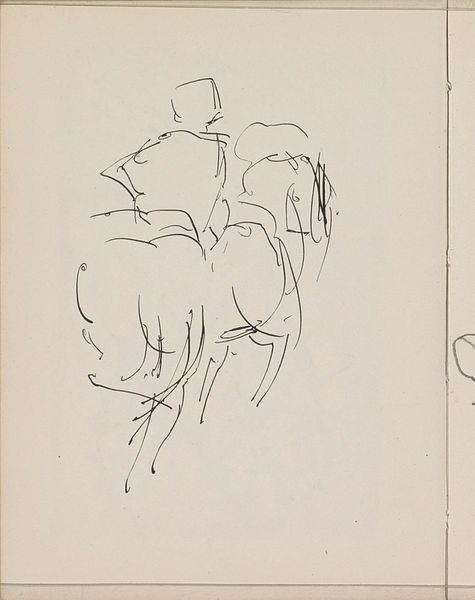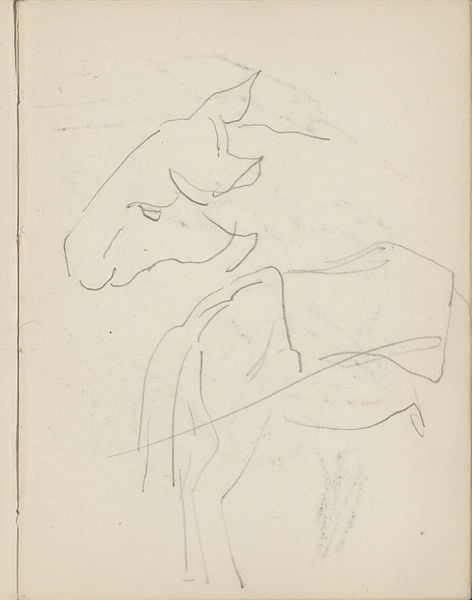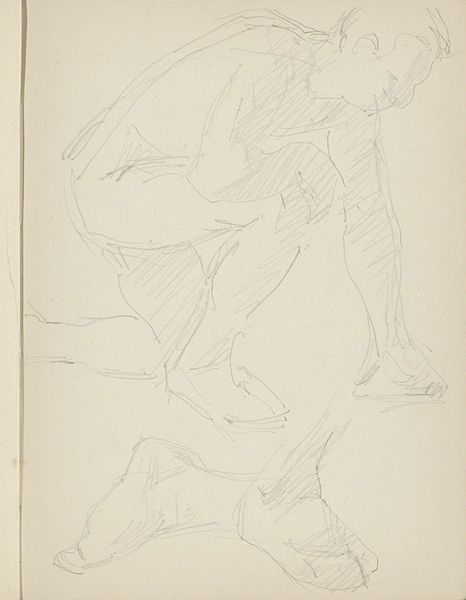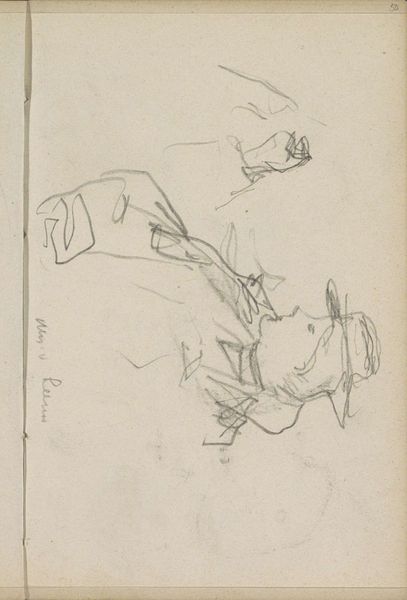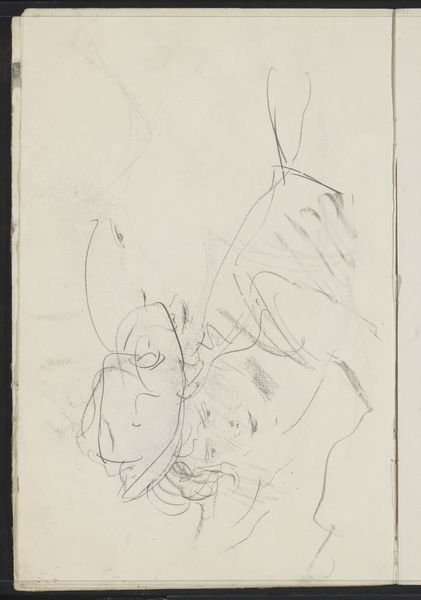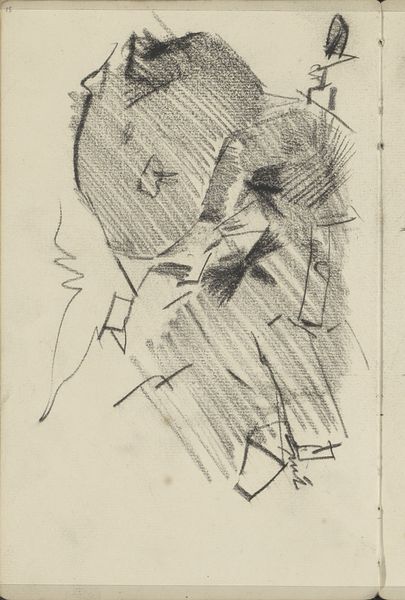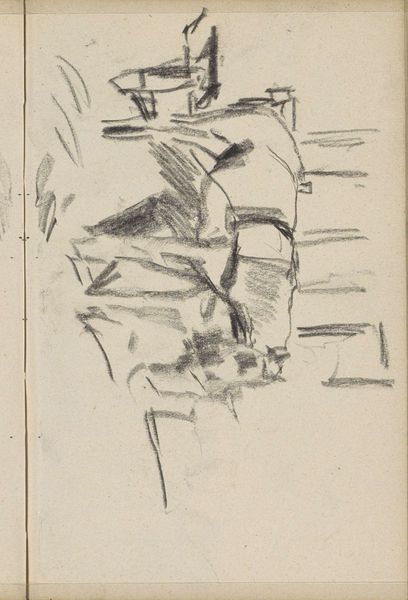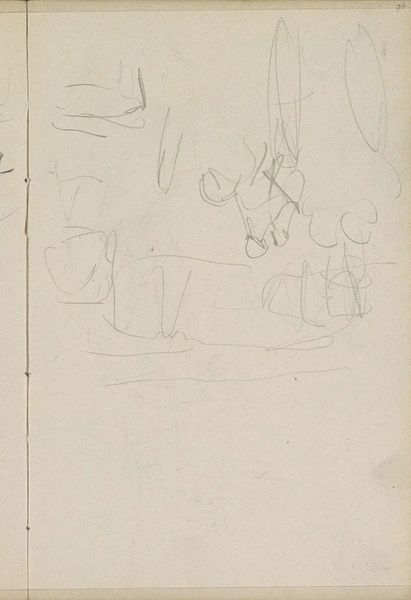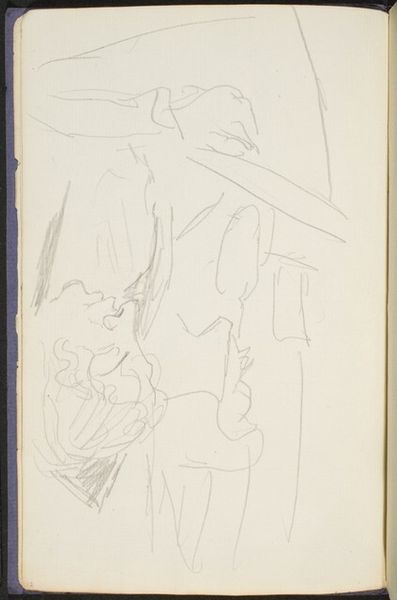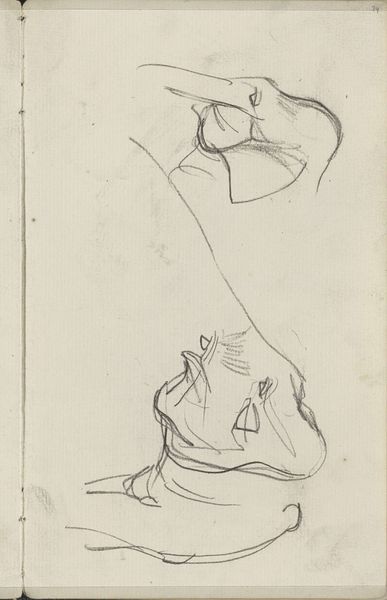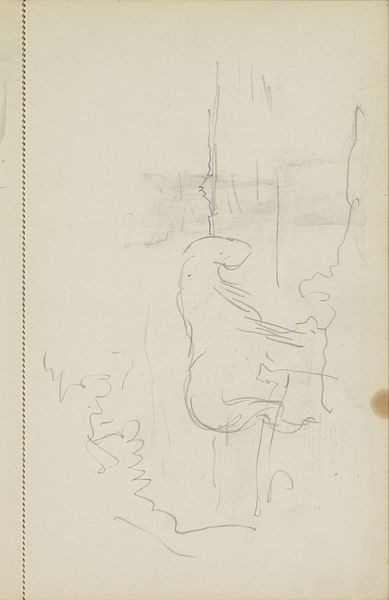
drawing, pencil
#
drawing
#
imaginative character sketch
#
light pencil work
#
pen sketch
#
form
#
personal sketchbook
#
idea generation sketch
#
ink drawing experimentation
#
pen-ink sketch
#
pencil
#
horse
#
sketchbook drawing
#
sketchbook art
#
initial sketch
Copyright: Rijks Museum: Open Domain
Curator: Immediately, I notice the dynamism in the lines, creating a real sense of movement even in this still image. Editor: Indeed. We're looking at "Paard met een halster"—"Horse with a Halter"—by Reijer Stolk, dating from 1906 to 1945. The piece is a study, executed in pencil, currently held at the Rijksmuseum. The rough, sketchy quality really foregrounds the artistic process itself. Curator: The medium truly speaks here; the pencil work exposes the artist's hand. Note how Stolk uses line weight to suggest form, opting for suggestive contours over explicit detail. Editor: And what a working animal the horse is. This image provides a glimpse into a life, now seemingly bygone, when equines offered a crucial form of traction power in the early part of the twentieth century. Think of the physical labour connected to this image. Curator: A potent thought. And beyond the social implication, there's a simplicity here—the emphasis is placed on form, on capturing the essence of the subject. This almost minimalistic rendering focuses the viewer on the horse as a sculptural object. The negative space becomes as crucial as the marks on the paper. Editor: Right. The lack of background pushes us to contemplate the context surrounding how draft animals were vital to agricultural workers for land cultivation, cargo and raw materials transport. How that labor shaped communities! I’d guess Stolk might be sketching at a stable, capturing a momentary rest, a brief respite from labor. Curator: I see that—almost as though we are witnessing a moment of tranquility amidst potential toil. Still, it's this focus on pared-down lines that elevates the image. Its formal qualities shine through the seeming simplicity. The subtle gradients, the almost absent shading. Editor: Exactly, and by considering the historical use of such animals, we might also understand that simplicity in terms of how the animal may have figured materially within the society of its time. Thank you for your insights on form and composition; I think it offers a unique lens on the subject, highlighting aspects I may have missed. Curator: The pleasure was mine. It is remarkable how differing viewpoints bring nuance to our interpretation, isn’t it?
Comments
No comments
Be the first to comment and join the conversation on the ultimate creative platform.
